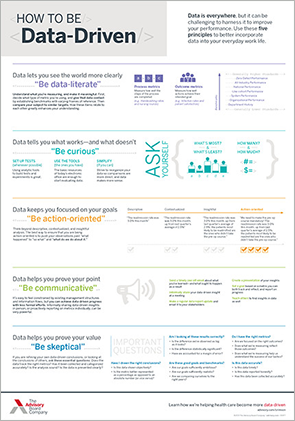Physicians in certain specialties are much more likely to be registered as Democrats or Republicans, Margot Sanger-Katz writes for the New York Times' "The Upshot."
"The Upshot" used two datasets provided by Yale University researchers: one containing every physician in the United States, and another containing the party registration of every voter in 29 states.
"The Upshot" then examined the relationship between physician specialty and political identification. Sanger-Katz writes that the research is the first to directly assess the political affiliations of a large sample of physicians.
Sanger-Katz notes that the Yale researchers used the data for a separate study that found how physicians advised patients on politicized health topics varied with doctors' political party affiliation.
Analysis findings
"The Upshot" analysis found that more than 50 percent of all physicians with party registrations identified as Democrats.
But affiliations were not evenly distributed across the various fields of medicine. While physicians "overall are roughly split between the parties, some specialties have developed distinct political preferences," Sanger-Katz writes.
For instance, 67 percent of surgeons, 65 percent of anesthesiologists, and 62 percent of urologists in the study sample were registered Republicans,while more than two-thirds of pediatricians, psychiatrists, and infectious disease specialists were registered Democrats.
Other specialties in which the majority of physicians were Republicans were ENT, radiology, ophthalmology, physical/rehab, dermatology, family medicine, and emergency medicine. On the other hand, registered Republicans made up the minority of doctors in geriatrics, endocrinology, neurology, internal medicine, pathology, nephrology, oncology, OB-GYN, pulmonary, gastroenterology, and cardiology. (The Times published a breakdown only of the percent of doctors by specialty who were Republicans).
Possible factors
Researchers don't know why certain specialties contain more Democrats or Republicans, Sanger-Katz writes, but they suggested a couple possible reasons.
Money could be part of the explanation: While physicians in all specialties tend to earn high salaries, Republicans tended to work in specialties with the highest salaries, while Democrats tended to work in comparatively lower-paying fields. For example, anesthesiologists make more than $350,000, while psychiatrists and pediatricians make less than $250,000. That aligns with national data showing that among people with a certain level of education, higher-earning individuals tend to lean Republican.
But the trends in party affiliation also could reflect the changing demographics of health care. In recent years, more women have become doctors and have gravitated toward certain specialties—and the analysis found that, as in the overall population, female physicians were more likely than male physicians to be Democrats.
"So as women enter fields like pediatrics, obstetrics/gynecology and psychiatry, they may be making those fields more liberal," Sanger-Katz writes.
According to the research, it's likely that older doctors have switched party affiliations over the years. The practice of medicine also could play a part: Physicians in the past essentially operated as small-business owners and therefore may have been drawn to Republican goals of low taxes and limited regulation. But now, more physicians are employees of large companies and hospitals, Sanger-Katz writes.
Ron Ackermann, the director of the institute for public health and medicine at Northwestern University, offered another explanation, saying it could just come down to physicians' early experiences.
During medical school, "you'll be on a team that's psychiatry, and a month later you're on general surgery, and the culture is extraordinarily different," he said. "It's just sort of a feeling of whether you're comfortable or not. At the end, most students have a strong feeling of where they want to gravitate" (Sanger-Katz, "The Upshot," New York Times, 10/6).
No matter which party wins the White House, what will happen in the next era of health care reform?
No matter the results of the November elections, one thing is clear: The health care industry is entering the next era of health care reform. Hospital and health system leaders must transform the delivery system to meet two profound and lasting market evolutions: population health and consumerism.
At this year's Health Care Advisory Board national meeting, we'll help you identify and prioritize the no-regrets investments that will support success toward these goals and more.
Register now to save your spot at a session near you.
Don't miss out on the latest Advisory Board insights
Create your free account to access 2 resources each month, including the latest research and webinars.
Want access without creating an account?
You have 2 free members-only resources remaining this month remaining this month.
1 free members-only resources remaining this month
1 free members-only resources remaining this month
You've reached your limit of free monthly insights
Become a member to access all of Advisory Board's resources, events, and experts
Never miss out on the latest innovative health care content tailored to you.
Benefits include:
You've reached your limit of free monthly insights


